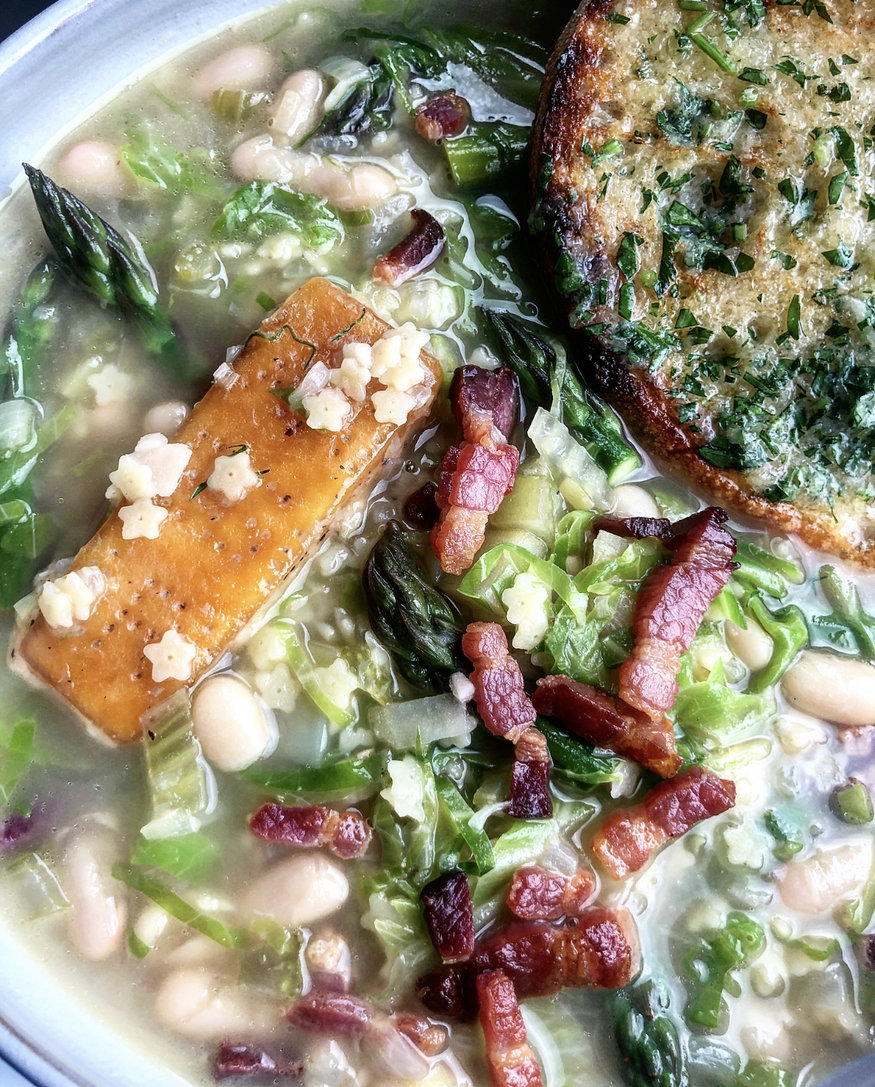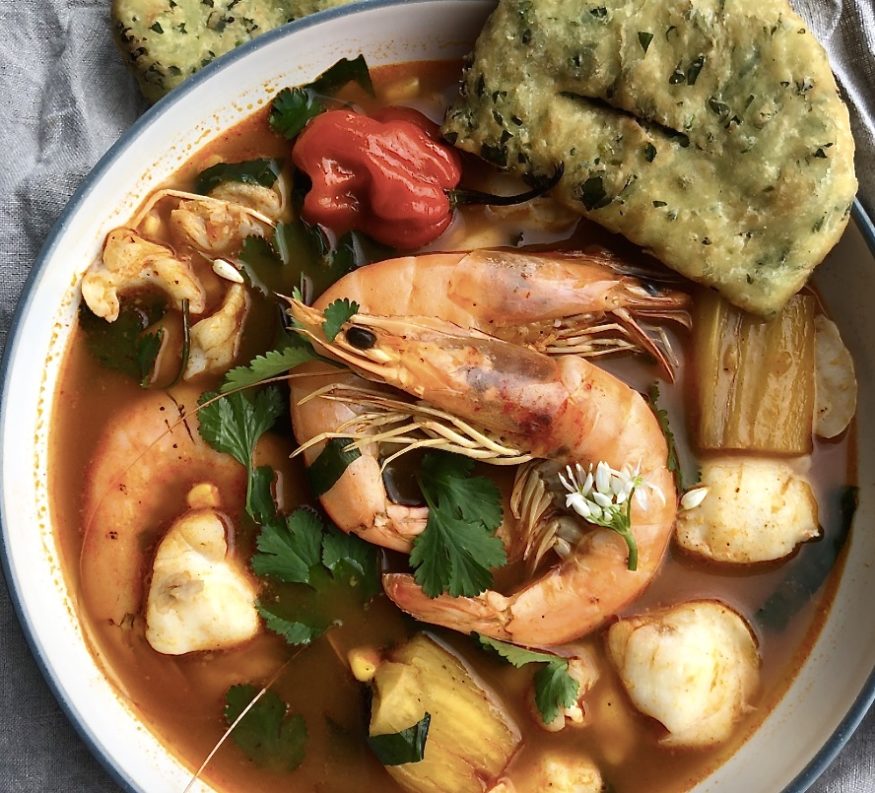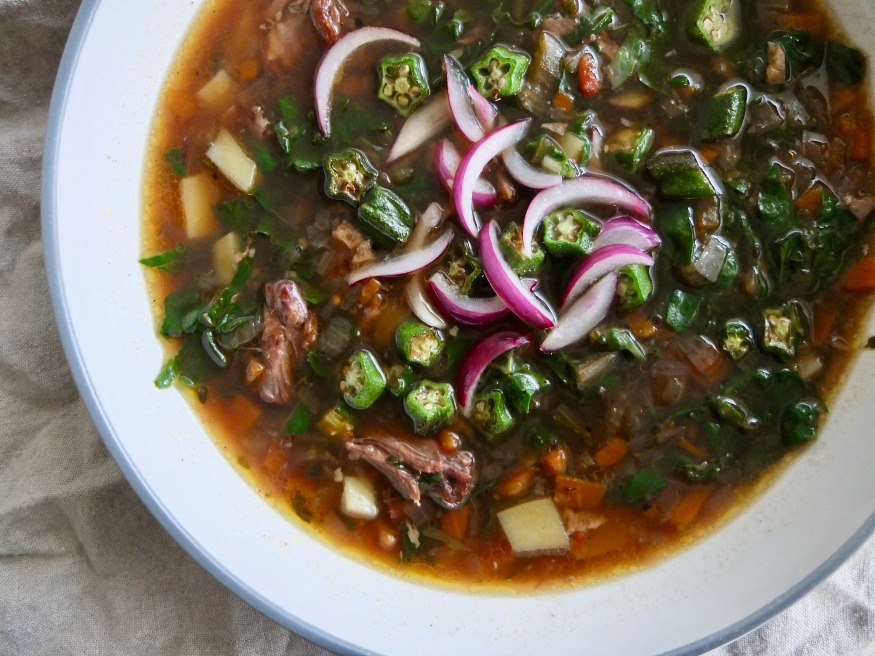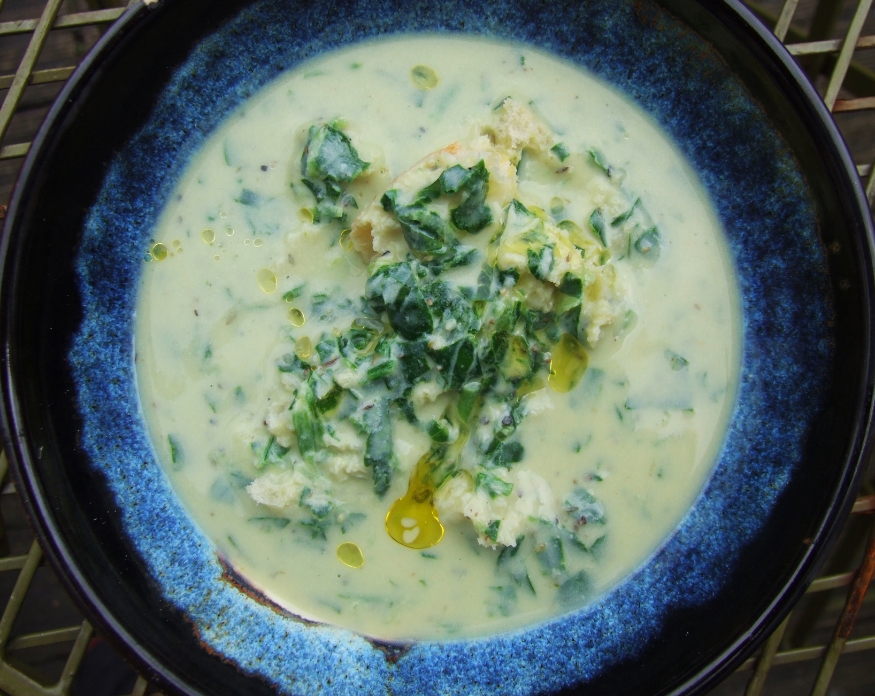
This is the second of three recipes produced in partnership with Parmigiano Reggiano
Lockdown has got me thinking about the cumulative power of small things; the way that all the behaviours we perform on a day to day basis stack up to equal our wellbeing. Something as small as smoothing on moisturiser after a shower; getting a haircut; buying an ice cream; shopping for ingredients without a list; taking the first sip of a cold pint; hugging a mate; wearing new shoes.
Quality of life is notoriously hard to measure, primarily because it’s subjective. We will likely agree on many measures of this fuzzy metric but many are specific to the individual. We all have different vulnerabilities, take pleasure in different activities and feel the holes left by people and places in different ways. Right now I feel a bit like I’m rushing to plug an emotional leak only for another one to spring up in its place.
This is related to minestrone, I promise. The Italian classic is itself an accumulation of small parts, adding up to a comforting whole. It’s also quite variable, although as far as I understand it the ingredients Italians argue about most are the beans and pasta. I’m sure most would also be horrified at my changing the veg and serving the soup with what basically equates to garlic bread but as I said, it’s each to their own right now. I’m going with what makes me happy and so should you.
Parmigiano Reggiano is, of course, non-negotiable. I’ve always kept old rinds in the freezer ready for soup-making because there’s tons of flavour there for the taking. The rind simmers, softens and leaks its umami into the broth. Recently, I saw Rosie Mackean frying hers to caramelise it before simmering and I thought it was genius, so that’s what I’ve done with this recipe. I’d recommend – as she does – keeping the rind back as a chef’s treat.
The distinctive, dotted rind of Parmigiano Reggiano can be eaten as there’s no wax used to cover it; the outside is hard purely due to its reaction with the air. As a PDO product there are many regulations governing its manufacture, of course; strict feeding regulations for the cattle which produce the milk; a minimum period of maturation and a regional restriction which denotes that all stages of production must occur in Parmigiano Reggiano’s area of origin in northern Italy.
Will I emerge from this strange period matured like a fine cheese, or with a touch of rot around the edges? It’s the little things that are likely to preserve my whole.
Minestrone Soup with Parmigiano Reggiano Recipe
Serves 4
1 large onion, diced
2 ribs celery, diced
5 cloves garlic, peeled and crushed or grated
1 medium potato, diced the same size as the onion
1 tin cannellini beans, drained and rinsed
120g (or thereabouts) spring greens or sweetheart cabbage (ribs removed and finely sliced)
1 bunch asparagus (around 16 spears, trimmed and cut into 1 inch lengths)
75g small pasta shapes
600ml good chicken or vegetable stock
1 rind of Parmigiano Reggiano
100g pancetta, diced and fried until crisp
Olive oil, for frying
For the garlic butter toast
I don’t think you need a recipe to tell you how to mash garlic and parsley into butter and spread it onto toast, so I’ll leave that one with you.
Add a glug of oil to a nice large saucepan and gently cook the onion and celery until soft but not coloured, around 5-10 minutes. Add your rind of Parmigiano Reggiano, dotted side up and let it caramelise on the bottom of the pan for a few minutes.
Add your garlic and cook gently, stirring, for a few minutes more. Add your potato and cook for a few minutes longer, then add the beans and stock along with 400ml water.
Bring to the boil then taste and season with salt and pepper. Let all this bubble away for 15 minutes or so, to let that cheese rind infuse.
Add your pasta shapes and the stalk ends of the asparagus and cook for 2 minutes before adding the asparagus tips and cabbage.
Garnish with crispy pancetta and the garlic toast.






